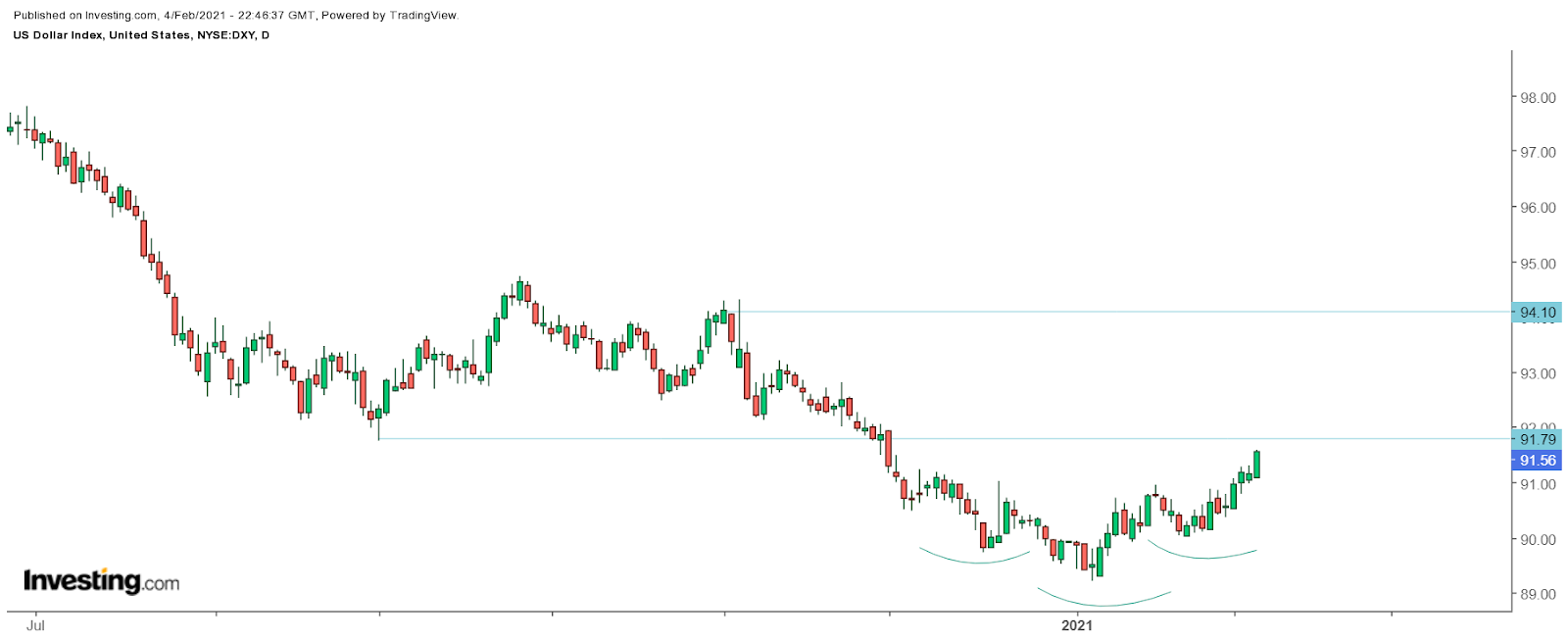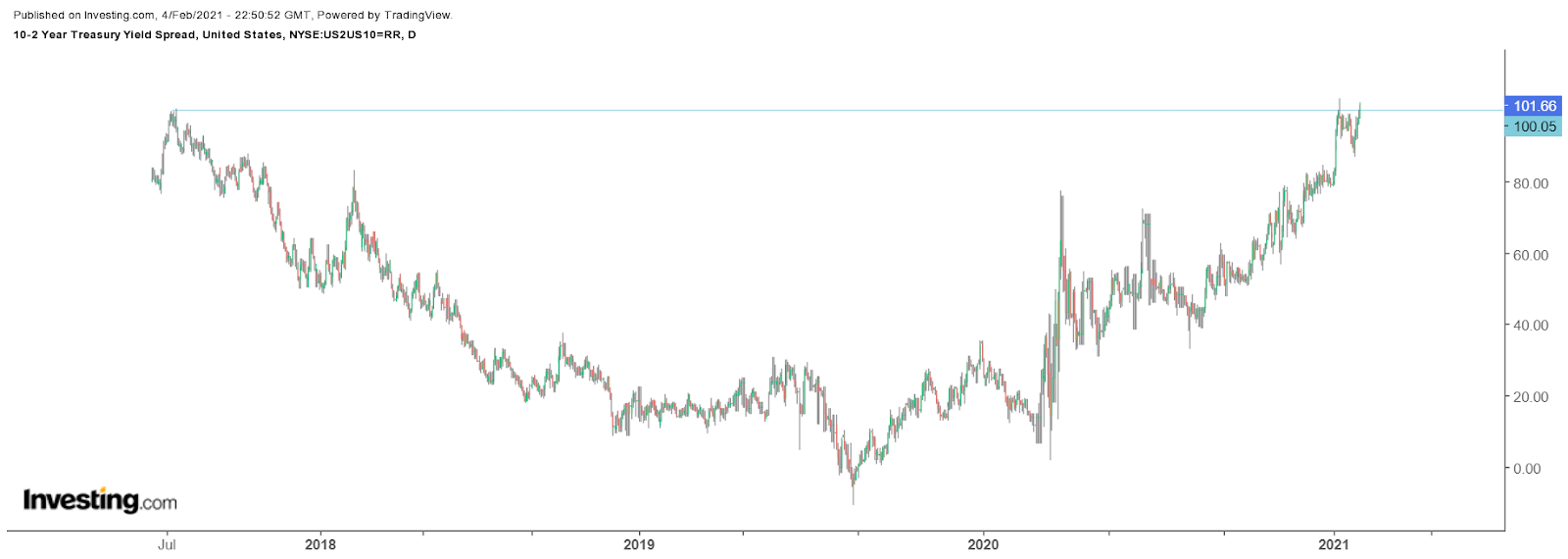This article was written exclusively for Investing.com
The dollar index has been quietly creeping higher in recent weeks. It now may be on the cusp of making a significant jump, based on an analysis of the technical chart. This comes as the euro begins to show signs of significantly breaking down.
The tailwind for the dollar comes as the prospects for US growth appear to outweigh the fears of mounting debt as the US prepares another round of stimulus. This is helping to push yields higher on the 10, and 30-year Treasury, steepening the yield curve and widening the spreads with shorter-dated maturities to levels not seen since 2017. Additionally, the spread between US and European bonds has widened, potentially helping boost the dollar versus the euro.
The dollar index has broken out meaningfully, with a potentially bullish reversal pattern known as an inverse head and shoulder. This has resulted in the dollar index rising rapidly to a resistance level of around 91.80. However, if the index surpasses resistance at 91.80, it could send the index surging higher to 94.10.

It could be the case that the dollar rallies sharply because the euro is weakening dramatically. The euro dropped below 1.20 to the dollar on Feb. 4, for the first time since Dec. 1. It could lead to the euro falling to as low as 1.16 to the dollar. Pulling it all the way back to the long-term downtrend, it broke above in October.

The stronger dollar comes as the 10-year yield has risen sharply to around 1.15%, with the potential to increase to higher levels from here. The latest ISM manufacturing data suggests that the US economy is improving. Simultaneously, the prices paid noted in the report have risen to their highest levels since 2011. Coupled with more stimulus, the momentum the 10-year has recently witnessed could be enough to send it on its way to technical resistance at 1.35%. The 30-year has also risen sharply and could jump to around 2.15% based on a similar analysis.

The rising yields have helped the spread between the US 10-year and 2-year to widen to their widest points since July 2017. Meanwhile, the spread between the US 10-year and German 10-year has also widened dramatically, from 1% last spring to around 1.6% presently.

The surging yields have certainly helped bring the dollar back to life, as has the prospects for additional growth. But a rising dollar is not good for all. Emerging markets and their equities are likely to have negative consequences, as do commodities such as gold. This could also potentially hurt the risk-on trade mentality, bringing to a halt the big rally we have witnessed in emerging markets and commodity prices like copper.
Additionally, this could prove problematic for the broader US equity market. A strong dollar may create headwinds for multi-national countries, potentially hurting revenue and profits. However, this may only prove a problem over the short-term. Once the dollar begins to stabilize, the headwinds that challenge revenue and profits should normalize.
If it does turn out to be true, and the US economy does improve faster than many other economies, the dollar's recent rally may only be the beginning of a long-term move higher back to pre-pandemic levels.
